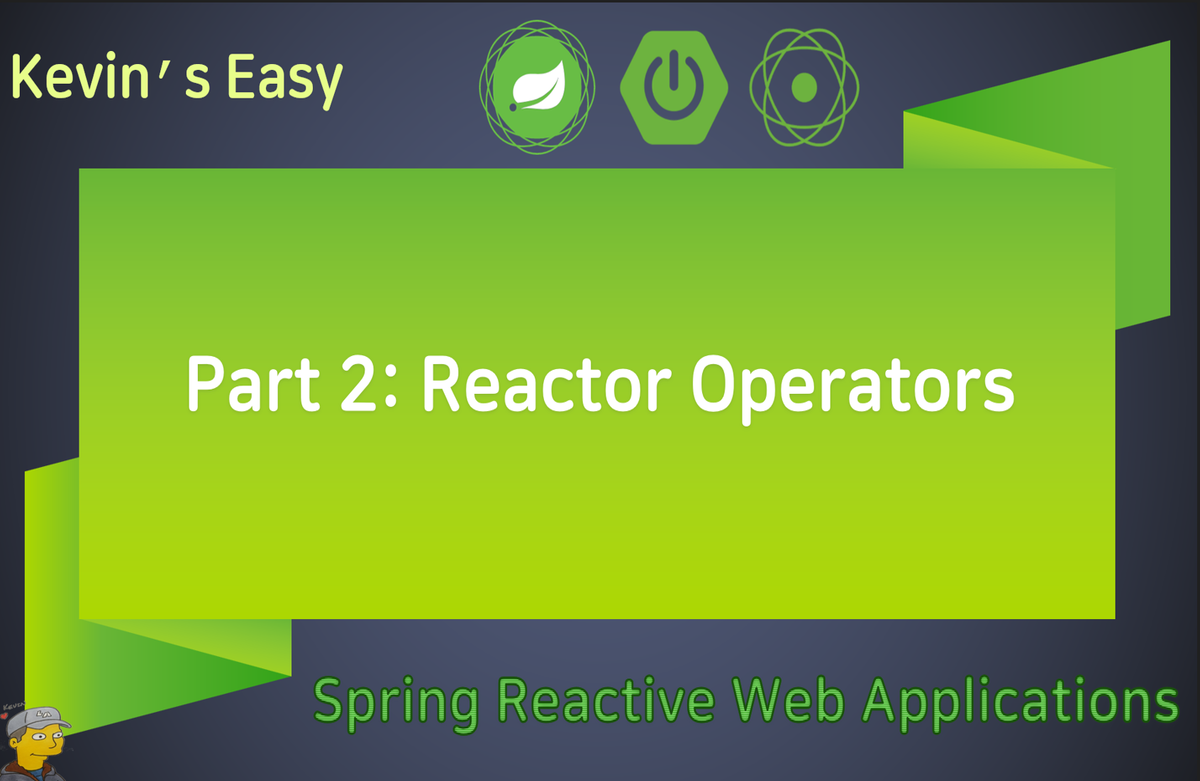![[Java 실무 프로젝트 심화편] Spring Core + H2 기반 푸드 트럭 키오스크 시스템 제작강의 썸네일](https://cdn.inflearn.com/public/files/courses/336594/cover/01k8hetsq20rg69zw5ve0q5729?w=420)
[Java 실무 프로젝트 심화편] Spring Core + H2 기반 푸드 트럭 키오스크 시스템 제작
Kevin
실무 감각을 키우고 싶은 입문 개발자를 위한 Java 심화 프로젝트 강의! Spring Core, JdbcClient, H2 DB로 구성된 콘솔 기반 키오스크 주문 시스템을 함께 만들어갑니다.
초급
Java, Spring Boot, DDD
Reactor, one of the core technologies of Spring WebFlux-based reactive applications, and Reactor Operator, which can be said to be the most important part of Reactor, if you want to make it yours, take the `Kevin's Easy-to-Understand Spring Reactive WebApplications: Reactor Part 2` lecture.

How to use Operators to create Reactor Sequences
How to use Operators to filter data in Reactor Sequence
How to use an Operator to transform data emitted from a Reactor Sequence
How to use the Operator to check the internal operation of the Reactor Sequence
How to use time-related operators
How to use an operator to handle errors that occur in a reactor sequence
How to use Operators to split data emitted from a Reactor Sequence
Who is this course right for?
Junior developers who want to learn reactive programming
Developers who want to learn the basics of Project Reactor
If you are having trouble figuring out how to learn the Operator of Project Reactor
Anyone who wants to gain insight into using the Operator in Project Reactor
Anyone who wants to develop a reactive web application based on Spring
Need to know before starting?
Java
Basic knowledge about Project Reactor
6,340
Learners
235
Reviews
108
Answers
4.8
Rating
7
Courses
- 주력 언어 또는 기술 : Java, Spring Framework, RxJava, Reactor, Spring WebFlux
- (주)코드스테이츠(https://www.codestates.com)에서 Senior Educational Software Engineer(Backend)로 활동
(From 2022.03 To 2024.01.31)
- 프리랜서 개발자 및 강사로 활동(From 2024.02)
- 저서
안녕하세요? Kevin이라고 합니다. ^^
인프런에서 이렇게 강사로서 여러분들을 만나게 되어서 너무 반갑습니다.
어떤 분야든 마찬가지겠지만 특히나 소프트웨어 개발자는 끊임없이 변화하는 트렌드에 뒤처지지 않도록 항상 자기 자신을 갈고 닦는것이 개발자로써 살아남는 유일한 방법이라고 생각하며 항상 배우는 자세로 즐겁게 소프트웨어 개발을 하고 있는 개발자 중 한 명입니다.
제가 가지고 있는 지식과 경험이 다른 분들에게 조금이나마 도움이 되기를 바라면서 인프런에서 강좌를 시작하였습니다.
앞으로 수강생분들에게 현실적으로 도움이 되는 다양한 강좌로 꾸준히 찾아뵙도록 하겠습니다. 감사합니다.
질문이나 의견은 언제든지 환영하니, 이메일(it.village.host@gmail.com)로 편하게 얘기해주세요.
All
36 lectures ∙ (6hr 10min)
Course Materials:
All
8 reviews
4.9
8 reviews
Limited time deal
$55,000.00
16%
$51.70
Check out other courses by the instructor!
Explore other courses in the same field!